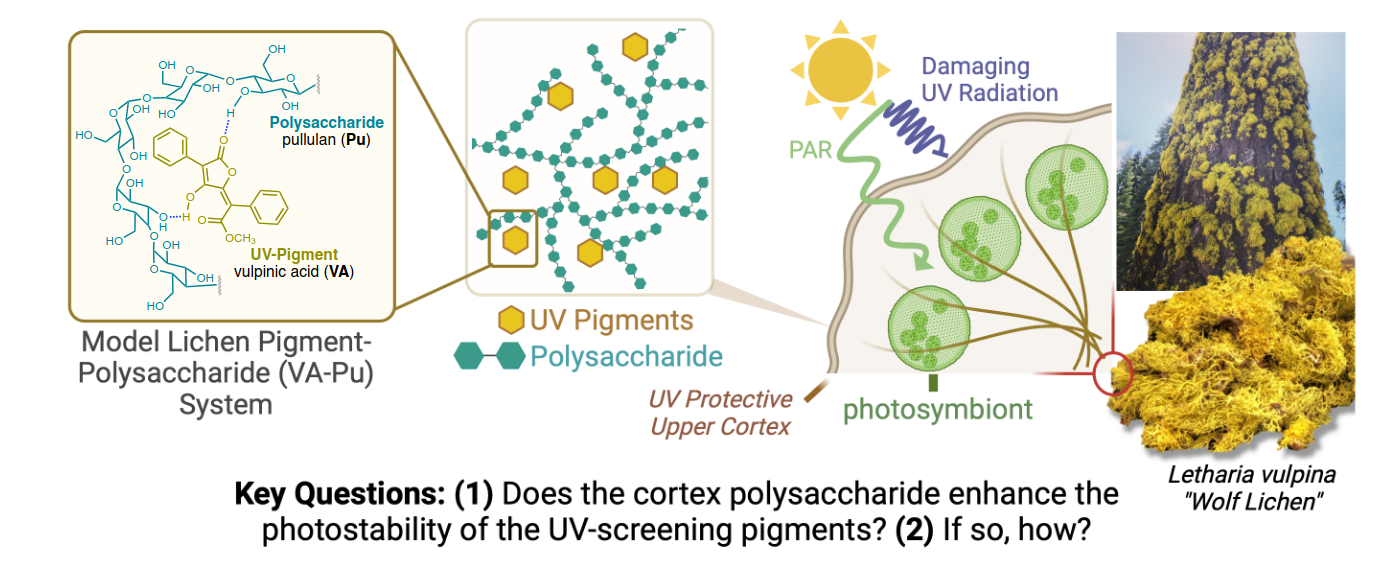Beautiful! Thanks for sharing!
When I saw it, I thought "this looks like it must be fluorescent under UV!". So, I looked it up, and found out that it probably isn't fluorescent (but if you have a UV flashlight to test, I am quite curious to know).
From what I can find, the yellowish green color comes from the molecule vulpinic acid. Especially interesting is that this molecule is prone to breaking down in the presence of light (terrible quality for a pigment), but a recent paper suggests that inside of the lichen the molecule sticks to polysaccharide chains in a way that dampens the molecule's photogradation pathway. The pigment can still absorb UV light but rather than dissipating the energy in a destructive process the polysaccharide holds the molecule in place and dampens the molecule's response by quickly dissipate the energy. Here is the open-access paper, and diagram below.

I also found that the name Vulpicida, Letharia vulpina, and Vulpinic acid come from folk tales about these lichens being used to poison foxes (vulpes = fox) and wolves. Not sure if it is true...
Apologize for the information dump, but I saw the bright colors and just had to look into its photophysics 😂
